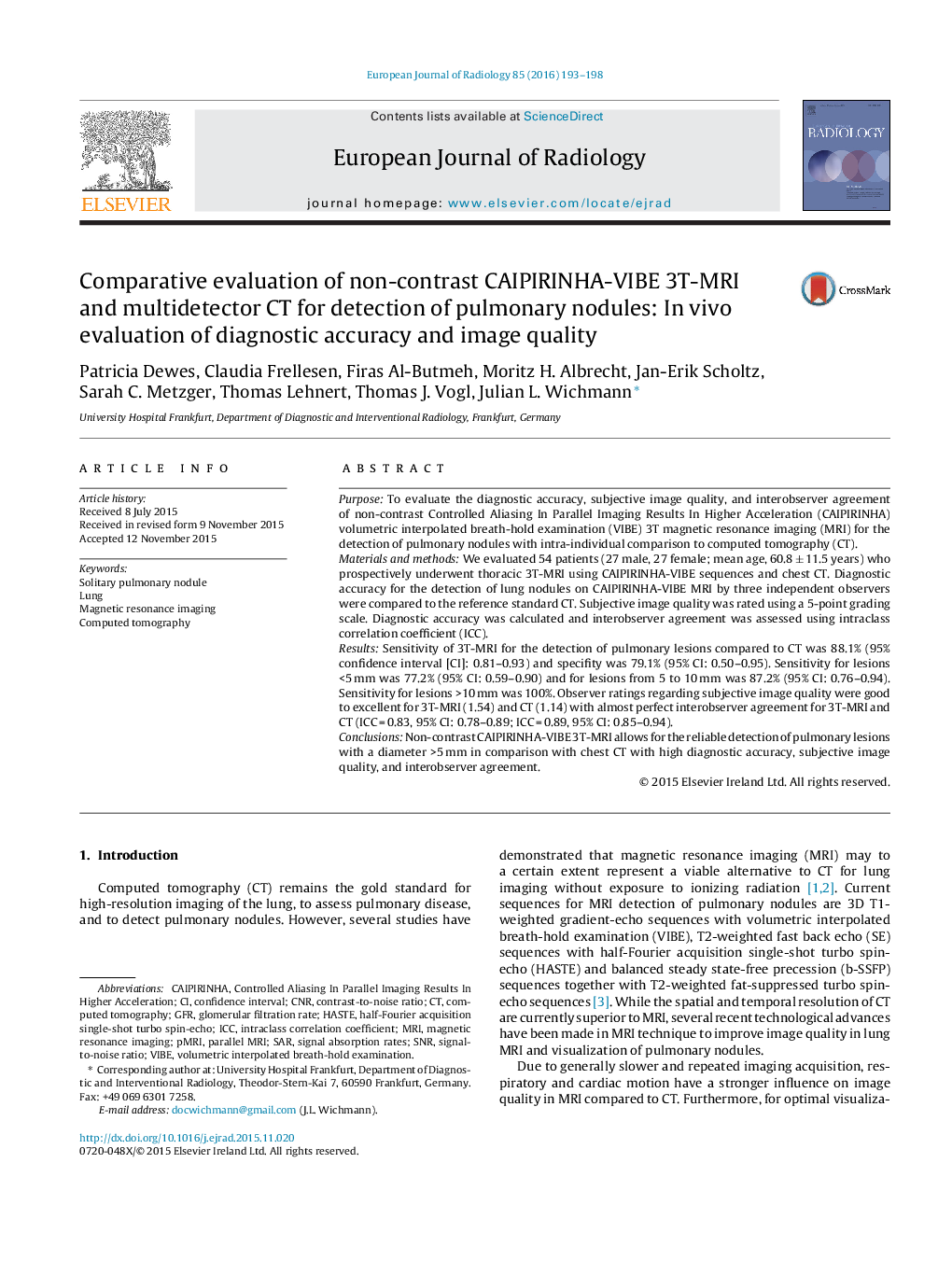| Article ID | Journal | Published Year | Pages | File Type |
|---|---|---|---|---|
| 6243214 | European Journal of Radiology | 2016 | 6 Pages |
PurposeTo evaluate the diagnostic accuracy, subjective image quality, and interobserver agreement of non-contrast Controlled Aliasing In Parallel Imaging Results In Higher Acceleration (CAIPIRINHA) volumetric interpolated breath-hold examination (VIBE) 3T magnetic resonance imaging (MRI) for the detection of pulmonary nodules with intra-individual comparison to computed tomography (CT).Materials and methodsWe evaluated 54 patients (27 male, 27 female; mean age, 60.8 ± 11.5 years) who prospectively underwent thoracic 3T-MRI using CAIPIRINHA-VIBE sequences and chest CT. Diagnostic accuracy for the detection of lung nodules on CAIPIRINHA-VIBE MRI by three independent observers were compared to the reference standard CT. Subjective image quality was rated using a 5-point grading scale. Diagnostic accuracy was calculated and interobserver agreement was assessed using intraclass correlation coefficient (ICC).ResultsSensitivity of 3T-MRI for the detection of pulmonary lesions compared to CT was 88.1% (95% confidence interval [CI]: 0.81-0.93) and specifity was 79.1% (95% CI: 0.50-0.95). Sensitivity for lesions <5 mm was 77.2% (95% CI: 0.59-0.90) and for lesions from 5 to 10 mm was 87.2% (95% CI: 0.76-0.94). Sensitivity for lesions >10 mm was 100%. Observer ratings regarding subjective image quality were good to excellent for 3T-MRI (1.54) and CT (1.14) with almost perfect interobserver agreement for 3T-MRI and CT (ICC = 0.83, 95% CI: 0.78-0.89; ICC = 0.89, 95% CI: 0.85-0.94).ConclusionsNon-contrast CAIPIRINHA-VIBE 3T-MRI allows for the reliable detection of pulmonary lesions with a diameter >5 mm in comparison with chest CT with high diagnostic accuracy, subjective image quality, and interobserver agreement.
